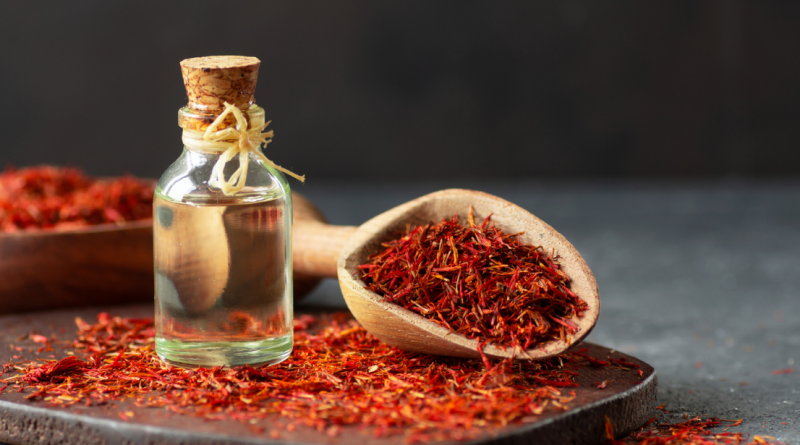Safflower oil is high in nutrients and health benefits
Safflower oil contains almost 75% linoleic acid, which may help lower blood cholesterol and improve heart and circulation conditions. Safflowers have a higher linoleic acid than other oils like corn.
The oil is a healthy oil produced from the seeds of the plant. It can used to cook. It contains poly- and monounsaturated unsaturated fats as well as vitamins. However, because it produces a lot of smoke, safflower oil is used only for high-heat cooking. This oil is available in many supermarkets. It tastes good.
Safflower oil can used to make margarine and salad dressings. Oil is produced from two types of safflower. One has a higher linoleic destructive fat (polyunsaturated), and the other has a higher oleic destructive fat (monounsaturated).
Most of the safflower oils used in foodstuffs you buy in shops are low-fat oleic. The drug Cenforce 100 Blue Pill can used to treat ED.
Dietary Data
The USDA has listed the nutrition for one tablespoon of safflower seed oil (14 grams).
Carbs
Safflower oil is a type of fat and does not contain any starches. Safflower oil does not have a glycemic index.
Fats
Safflower oil contains three distinct lipid types. Safflower oil contains two grams of polyunsaturated fatty acids per tablespoon.
Protein
Safflower oil contains no proteins.
Nutrients and Minerals
Safflower oil is a good source of vitamin E. One tablespoon contains 4.6 milligrams of vitamins, 23% of your daily requirement. In safflower oils, food K and choline can also found in 0.03 micrograms. One microgram.
Monounsaturated and polyunsaturated fats should replace less energizing fats (such as trans fats or inundated fats). Monounsaturated unsaturated fats should make up 15% to 20% of daily calories, according to the Foundation of Food and Dietetics.
Medical benefits
Safflower oil contains an unimaginable amount of healthy unsaturated fats. The oil is also gluten-free, a veggie sweetener, and suitable for weight loss plans. This information is provided on the Cenforce 200 Mg Tablet benefits to capacity and prosperity.
Cholesterol levels could kept within proper limits
Safflower oil is known to have heart-healthy properties. It is a monounsaturated oil that is high in oleic damage. Oleic destruction should reduce LDL cholesterol (also implied as “terrible LDL cholesterol”). When you consume monounsaturated fats, it is generally accepted that your HDL LDL, also known as “specific” LDL, cholesterol will rise.
Safflower oil high in oleic damage and monounsaturated is known to have heart-healthy properties. Oleic destructive is known to reduce LDL cholesterol (or “dreadful cholesterol”). Monounsaturated fatty acids are known to raise HDL cholesterol or “fantastic cholesterol”.
Reduce the risk of Bosom Cancerous growth
Oleic destructive is a component of safflower oils and has shown to reduce the risk of developing chest disease. According to research, oleic destruction is suppose to prevent the Her-2/neu, which is associat with chest illness development, from occurring. (erbB-2).
The oleic destructive in safflower oil also has a great preventive effect against chest illnesses. According to studies the Her-2/neu quality (erbB-2), which is a factor in chest illness, can suppressed by oleic destruction.
Reduce the risk of Coronary Illness
The risk of coronary heart disease can reduced by lowering LDL cholesterol while increasing or maintaining HDL cholesterol. Safflower oil also contains omega-6 unsaturated fatty acids, which have linked to a reduced risk of coronary heart disease. People who consume more omega-6 have a lower chance of developing the condition compared to those who take less.
By lowering LDL cholesterol, and increasing or maintaining HDL cholesterol, the risk of coronary disease is reduced. Omega-6 unsaturated fatty acids, also present in safflower oils, are associated with a reduced risk of coronary illness. It is concluded that people who consume a higher amount of omega-6 have a lower chance of developing the condition.
Can protect against eye problems
Safflower oil contains a large amount of vitamin E. Vitamin E consumption has linked to a lower risk of age-related macular degeneration, one of the main reasons for large visual mishaps in the developing population.
According to studies, vitamin E supplementation of 20 milligrams daily can reduce the risk of AMD by 20%. Additional studies that examined the affirmation and beta-carotene alongside L-ascorbic acid, zinc, copper, and zinc confirmed these disclosures.
It is one of the best sources of vitamin E. Vitamin E is link to a reduced risk of age-related macular (AMD), a serious eye condition that affects many people in developing countries.
Can you stop mental maturation?
A diet high in polyunsaturated, unsaturated fats (PUFAs) and vitamin E can help prevent neurodegenerative conditions like Alzheimer’s disease as well as mental disorders and other similar conditions. A more basic study is expect to confirm these findings.
Safflower oil contains a large amount of vitamin E. Vitamin E consumption has linked to a lower risk of age-related macular degeneration, one of the main causes of severe visual impairment in developing populations.
What would you plan?
The temperature at which smoke and exhaust are produce is call the flashpoint. Safflower oil is more explosive than other oil types like canola or olive oil.
To re-create stable doused oil, safflower, and liquid vegetable oils are suitable for cooking.
Safflower oil is also a neutral flavoring, so it can used to make salad dressings and other types of culinary products without affecting the taste. You can also use the oil to make sauces, dressings for vegetables, marinades, and plunges.
It can also used to make salad dressings, margarine, and other food products. Oil is produce by two types of safflowers, one of which contains more monounsaturated unsaturated fats (oleic destructive), and the other which has a higher polyunsaturated unsaturated fat content (linoleic damaging). The majority of safflower oils purchased for food are the oleic destructive type because it has a low amount of splashed fat.

